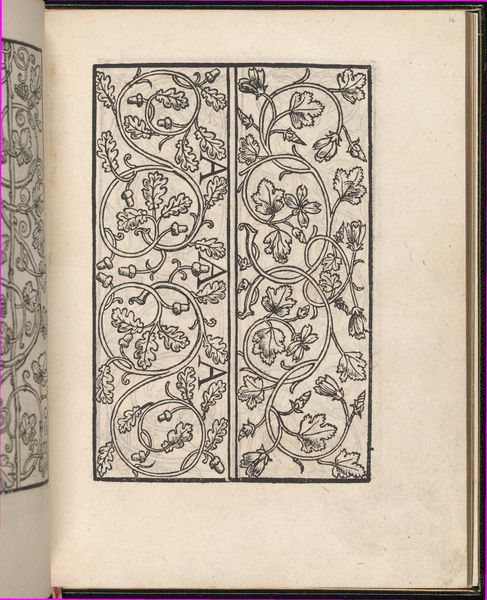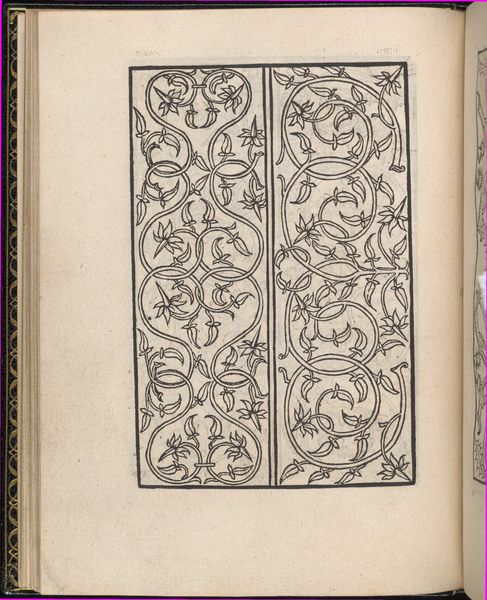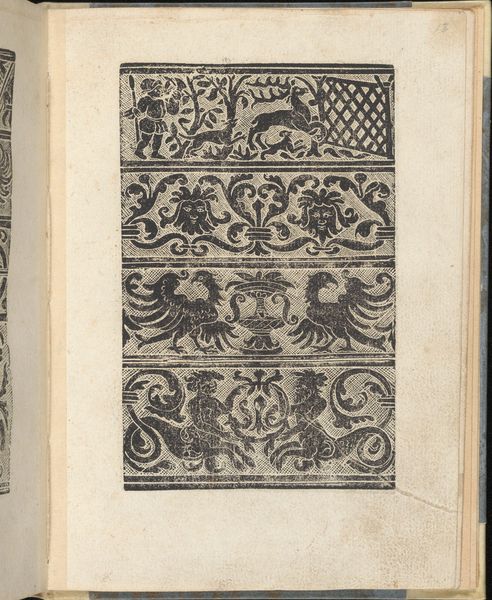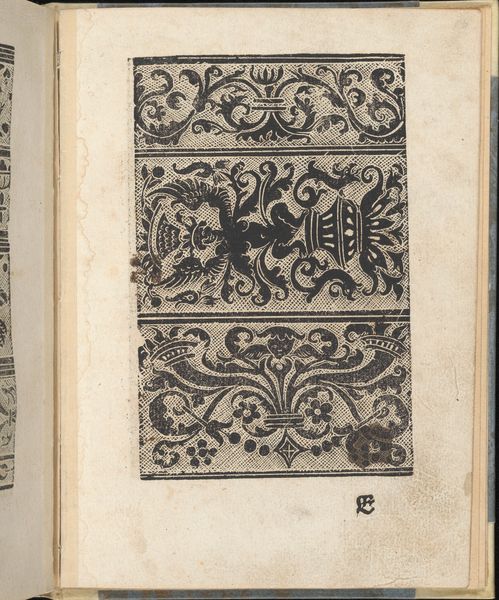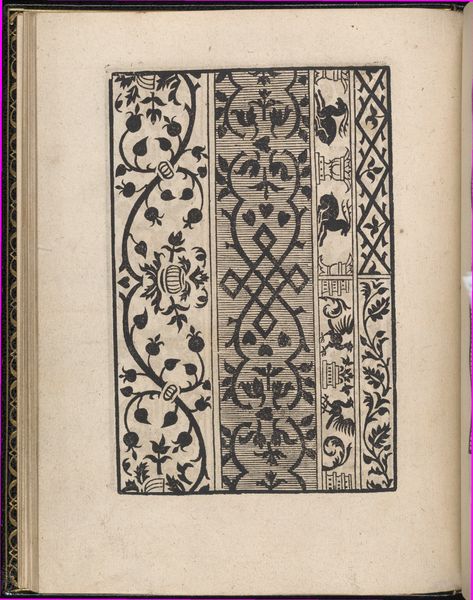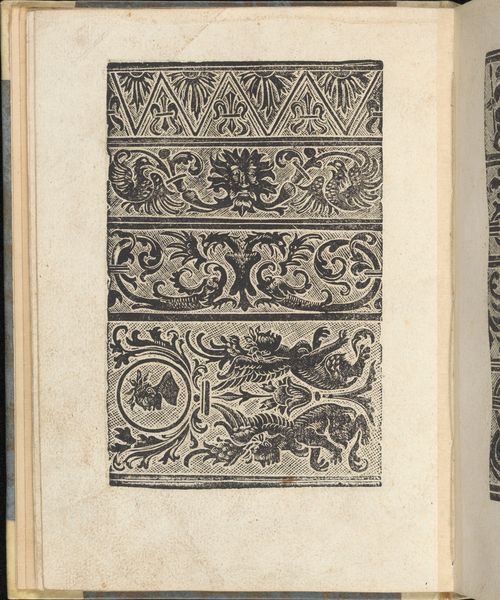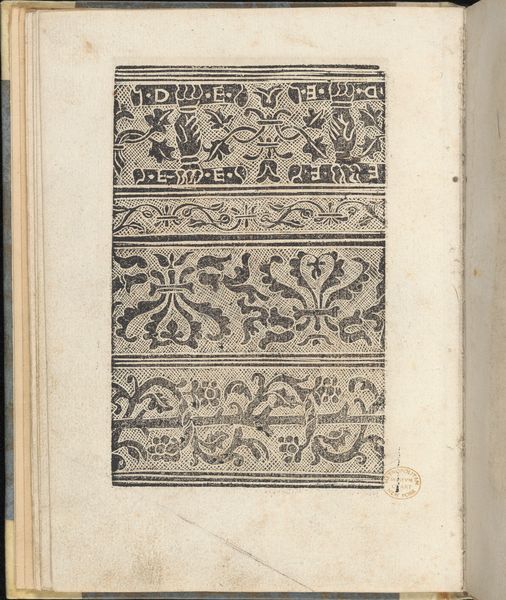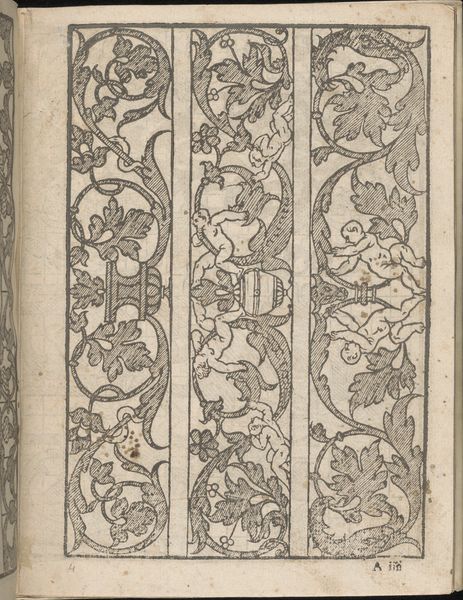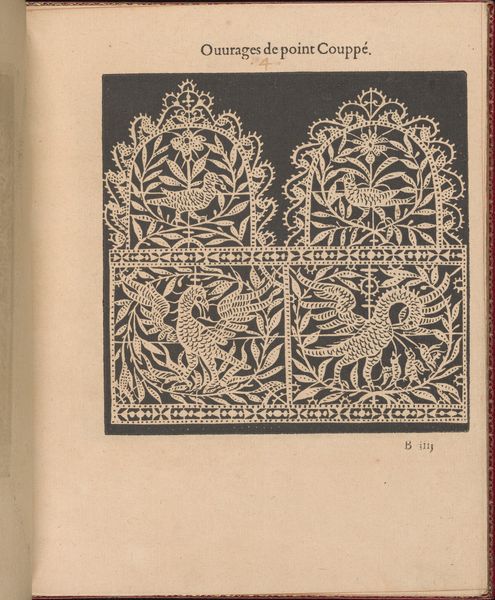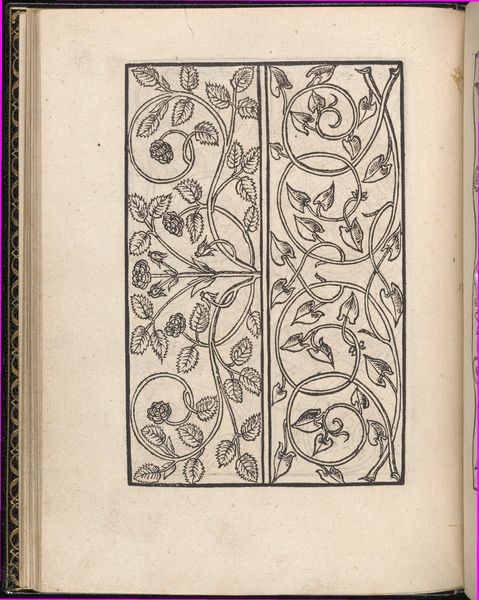
Page from Ein new kunstlich Modelbuch...(Page 43r) 1544
0:00
0:00
drawing, graphic-art, print, woodcut
#
drawing
#
graphic-art
#
medieval
# print
#
book
#
dog
#
figuration
#
personal sketchbook
#
woodcut
#
human
#
line
Dimensions: Overall: 7 11/16 x 5 7/8 in. (19.5 x 15 cm)
Copyright: Public Domain
This is a page from Peter Quentel’s "Ein new kunstlich Modelbuch," a German woodcut pattern book, printed in Cologne in the first half of the sixteenth century. These "model books" were incredibly influential in the development of visual culture, offering artisans a collection of designs that could be adapted for use in textiles, metalwork, and other decorative arts. The patterns seen here mix classical motifs, like stylized acanthus leaves, with secular scenes of the hunt. The page presents a series of vertical panels. One features dogs pursuing a man caught in a net - a scene that could represent the aristocracy pursuing the lower classes. Another incorporates dragons among the foliage. These designs were meant to be copied, adapted and re-interpreted by craftsmen. To fully understand this image, we need to consider the economic and social context in which it was made, looking at guild records and other archives. The printing press democratized design, allowing patterns to spread widely. What impact did that have on local traditions and craftsmanship? These are just some of the questions social historians ask.
Comments
No comments
Be the first to comment and join the conversation on the ultimate creative platform.

